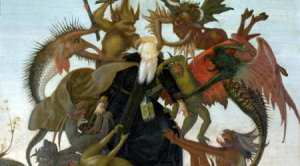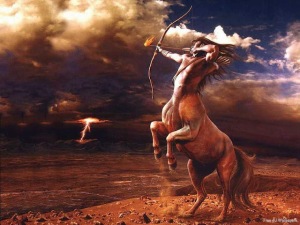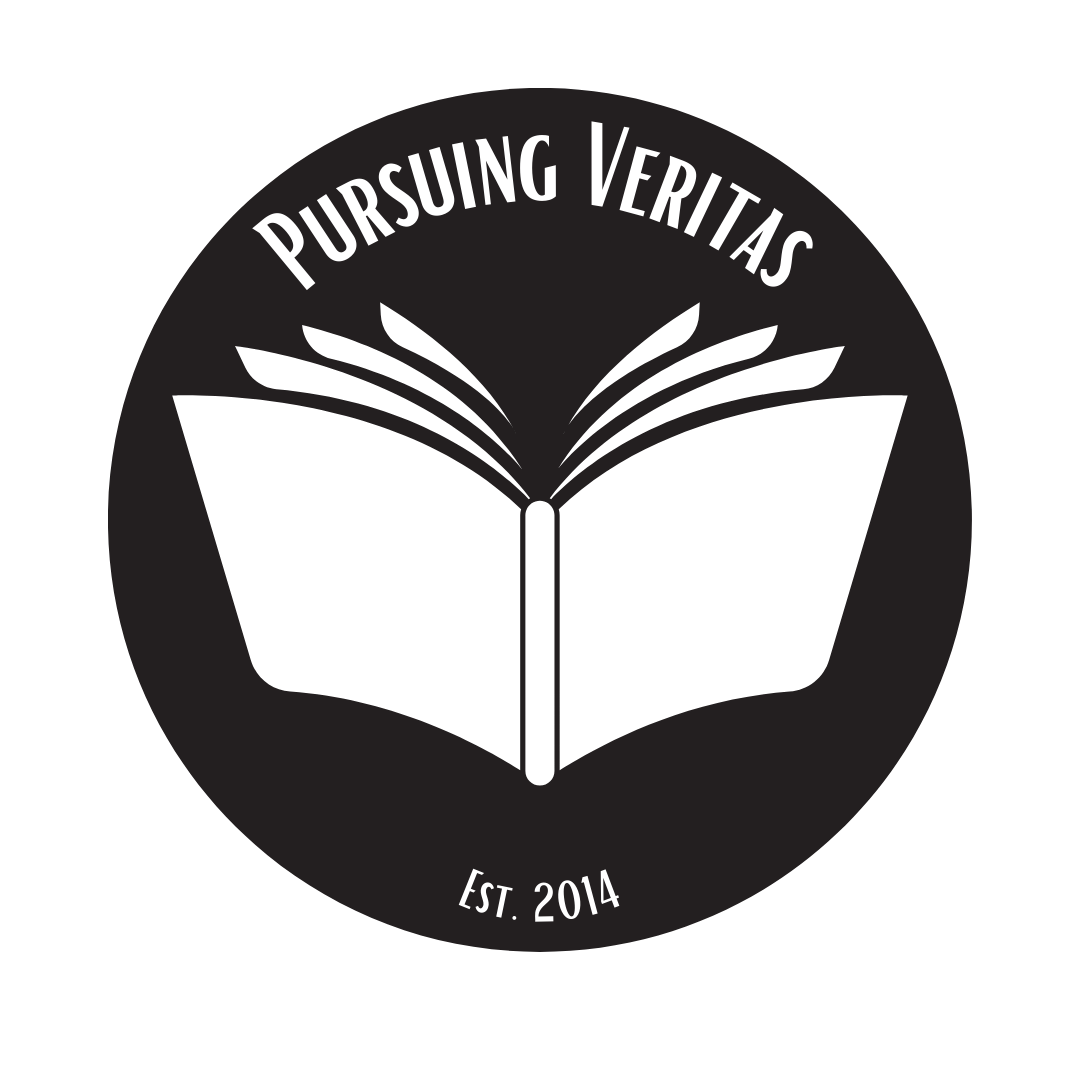 In the sixth chapter of his The Word in the Desert, Douglas Burton-Christie reflects on the influence of eschatology, compunction (penthos), asceticism, and the struggle against evil on the shape of the scriptural interpretation of the Desert Fathers (and Mothers). Highlighting monastic awareness of coming death and judgment (182-3), compunction and the power of scripture (187-91), and the dual (internal and external) nature of struggling against evil (192-5), Burton-Christie outlines the desert reading of the scriptures, remarking on the centrality of allegorical interpretation (196), the recapitulation of Jesus’ time in the desert (198), the power of the words of scripture (199), vigilance and guarding the heart (203-5), and the lack of relations (207). In light of a course devoted to the study of wilderness traditions, while Burton-Christie’s work remains intriguing, this treatment against raises questions about why early Christian monastics did not draw upon and/or develop further Israelite wilderness traditions. To my mind, the Father who asked, “Did Satan pursue them like this in the early days?” could easily have turned to Israel’s wilderness testing for some type of answer. Instead, figures such as Abraham, David, and Jesus were regularly utilized, at least according to Burton-Christie’s presentation. Although the Fathers were clearly aware of Moses—and, it seems, the language of the Pentateuch, at least exhortations to “watch yourself” (Gen. 24.6; Ex. 23.21)—these narratives were not meaningfully employed in the monastic resistance of evil. Could it be that Israel’s time in the desert was viewed more as a model of what not to do in order to avoid temptation? Perhaps. But Burton-Christie’s reflection on desert interpretations of scripture doesn’t address possible wilderness interpretations of Israel in the wilderness.
In the sixth chapter of his The Word in the Desert, Douglas Burton-Christie reflects on the influence of eschatology, compunction (penthos), asceticism, and the struggle against evil on the shape of the scriptural interpretation of the Desert Fathers (and Mothers). Highlighting monastic awareness of coming death and judgment (182-3), compunction and the power of scripture (187-91), and the dual (internal and external) nature of struggling against evil (192-5), Burton-Christie outlines the desert reading of the scriptures, remarking on the centrality of allegorical interpretation (196), the recapitulation of Jesus’ time in the desert (198), the power of the words of scripture (199), vigilance and guarding the heart (203-5), and the lack of relations (207). In light of a course devoted to the study of wilderness traditions, while Burton-Christie’s work remains intriguing, this treatment against raises questions about why early Christian monastics did not draw upon and/or develop further Israelite wilderness traditions. To my mind, the Father who asked, “Did Satan pursue them like this in the early days?” could easily have turned to Israel’s wilderness testing for some type of answer. Instead, figures such as Abraham, David, and Jesus were regularly utilized, at least according to Burton-Christie’s presentation. Although the Fathers were clearly aware of Moses—and, it seems, the language of the Pentateuch, at least exhortations to “watch yourself” (Gen. 24.6; Ex. 23.21)—these narratives were not meaningfully employed in the monastic resistance of evil. Could it be that Israel’s time in the desert was viewed more as a model of what not to do in order to avoid temptation? Perhaps. But Burton-Christie’s reflection on desert interpretations of scripture doesn’t address possible wilderness interpretations of Israel in the wilderness.
In The Body and Society, Peter Brown noted that the desert was for early Christians the “outer space of the ascetic world,” constituting a “measureless imaginative distance” (215). By the fourth century, located in the deserts of Egypt and Syria were holy men, figures who transversed what boundaries might have existed between desert and city. In “The Rise and Function of the Holy Man,” Brown traces four main needs which holy men filled in late antique society: making a distant God relevant to the particularity of human needs; serving as a professional in a world of amateurs; allying anxiety about salvation; and possessing authority on ethical questions. The holy man came to power with the erosion of classical institutions and re-asserted the new importance of the community. It is here that the theme of wilderness comes into play. For Brown, the holy man arrives from the wilderness (whether remote, as in Egypt, or local, as in Syria), different enough from the community to bring newness into the community, but similar enough to communicate with his followers. The holy man’s liminality allowed him to cross boundaries—human/divine, leader/follower, and geographic—and bring the insights of the desert to the peoples of the city. Like Moses, John the Baptist, and Jesus, holy men came from the desert to impact God’s messages to communities
 In “Jerome’s Centaur: A Hyper-Icon of the Desert,” Patricia Cox Miller examines Jerome’s Life of Saint Paul: The First Hermit and argues that Jerome possessed a relatively negative view of the desert, as a place of danger albeit one wherein complexity of theory and practice existed and the possibility existed for fruitful identity formation. Jerome reveals that the “raw matter” of the desert embodied psychic torment of human desire, an organic ascetic nature which was opposed to civic culture, simultaneously enticing and forbidding. Jerome relays a cacophony of animals—centaur, satyr, lions, ravens, and she-wolf—dwelling in the desert of the Life of Paul, which Cox Miller argues must not be taken as indicators of Jerome’s positive view of the desert (216). In particular, the centaur (known for its hyper-masculine and violent sexuality) brought to bear conflicting meanings: uncivilized yet the basis of recognizing the civil, rebellious of culture but a corrupt image of culture, a unique hybrid crossing humanity and animal, combining (in some sense) human rationality and animalistic passion. Through this paradoxical figure Jerome provided an opportunity for meditating on the human condition. For Cox Miller, this suggests that Jerome’s centaur functions as a hyper-icon, that it “pictures his fundamentally ambivalent standpoint toward the desert and its role in the development of Christian anthropology” (227). In this sense, the centaur—along with the wilderness in which he appeared—served as a locus of transformation, where new forms of human identity may be reflected upon and embodied. Jerome, perhaps more than any of the other early Christian voices this course has examined, allows for the dual nature of the wilderness as place of refuge and temptation, the habitation of angels and demons. In tracing the wilderness trope, I would be interested in seeing how—if at all—he draws upon OT language to convey these ideas. Furthermore, his emphasis on liminality and reflective transformation speak positively to the value of the temptations of the wilderness. Solitude and separation exist not only for their own sake or even for their purgative value. Rather, it is the effects of wilderness wrestling which help highlight human liberation from the burdens of culture and point toward salvation.
In “Jerome’s Centaur: A Hyper-Icon of the Desert,” Patricia Cox Miller examines Jerome’s Life of Saint Paul: The First Hermit and argues that Jerome possessed a relatively negative view of the desert, as a place of danger albeit one wherein complexity of theory and practice existed and the possibility existed for fruitful identity formation. Jerome reveals that the “raw matter” of the desert embodied psychic torment of human desire, an organic ascetic nature which was opposed to civic culture, simultaneously enticing and forbidding. Jerome relays a cacophony of animals—centaur, satyr, lions, ravens, and she-wolf—dwelling in the desert of the Life of Paul, which Cox Miller argues must not be taken as indicators of Jerome’s positive view of the desert (216). In particular, the centaur (known for its hyper-masculine and violent sexuality) brought to bear conflicting meanings: uncivilized yet the basis of recognizing the civil, rebellious of culture but a corrupt image of culture, a unique hybrid crossing humanity and animal, combining (in some sense) human rationality and animalistic passion. Through this paradoxical figure Jerome provided an opportunity for meditating on the human condition. For Cox Miller, this suggests that Jerome’s centaur functions as a hyper-icon, that it “pictures his fundamentally ambivalent standpoint toward the desert and its role in the development of Christian anthropology” (227). In this sense, the centaur—along with the wilderness in which he appeared—served as a locus of transformation, where new forms of human identity may be reflected upon and embodied. Jerome, perhaps more than any of the other early Christian voices this course has examined, allows for the dual nature of the wilderness as place of refuge and temptation, the habitation of angels and demons. In tracing the wilderness trope, I would be interested in seeing how—if at all—he draws upon OT language to convey these ideas. Furthermore, his emphasis on liminality and reflective transformation speak positively to the value of the temptations of the wilderness. Solitude and separation exist not only for their own sake or even for their purgative value. Rather, it is the effects of wilderness wrestling which help highlight human liberation from the burdens of culture and point toward salvation.

Leave a comment